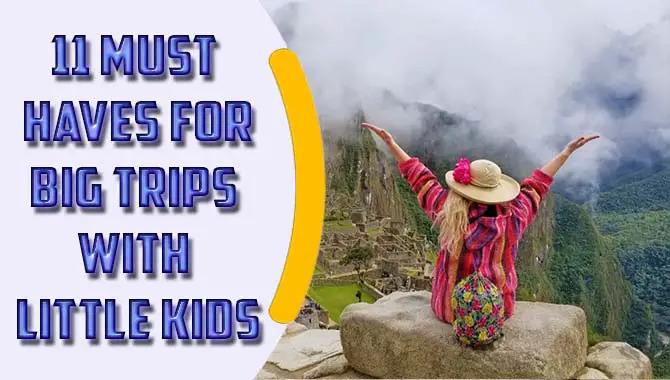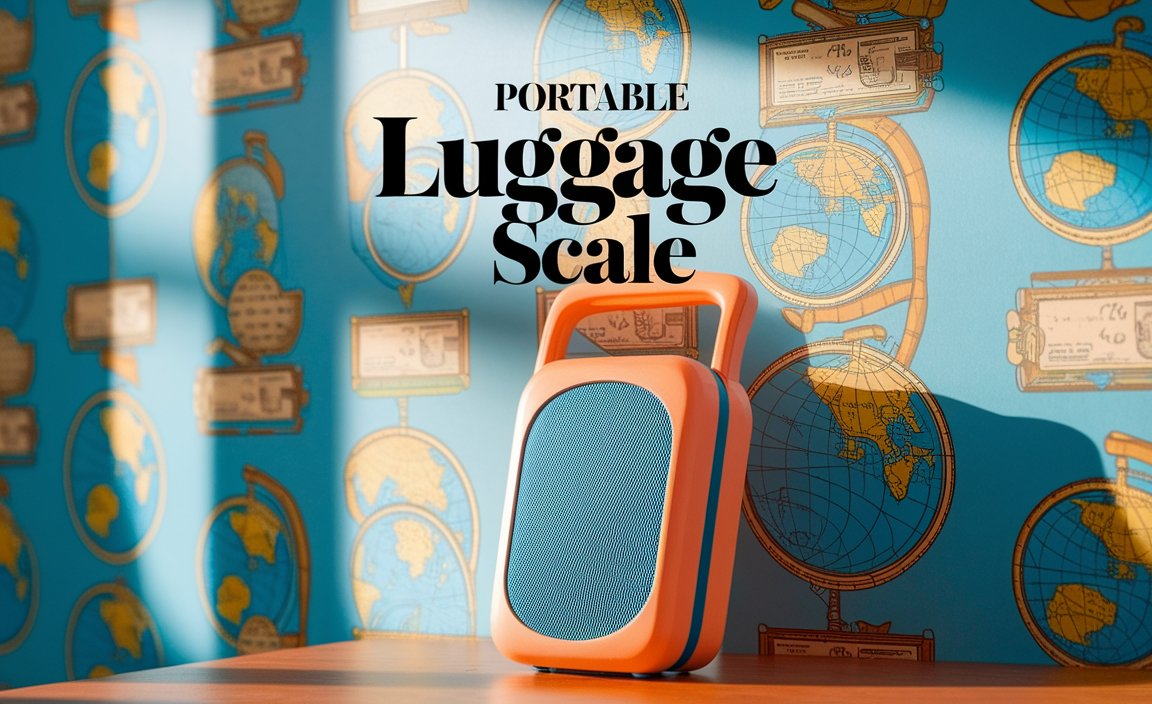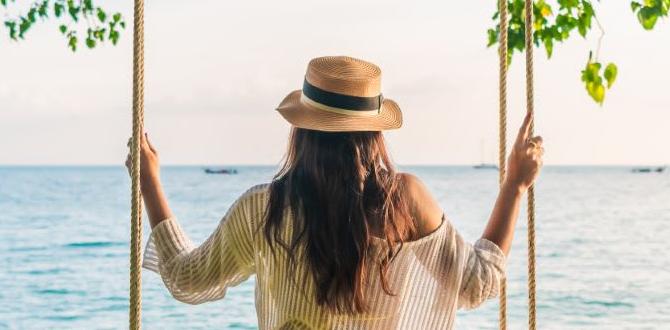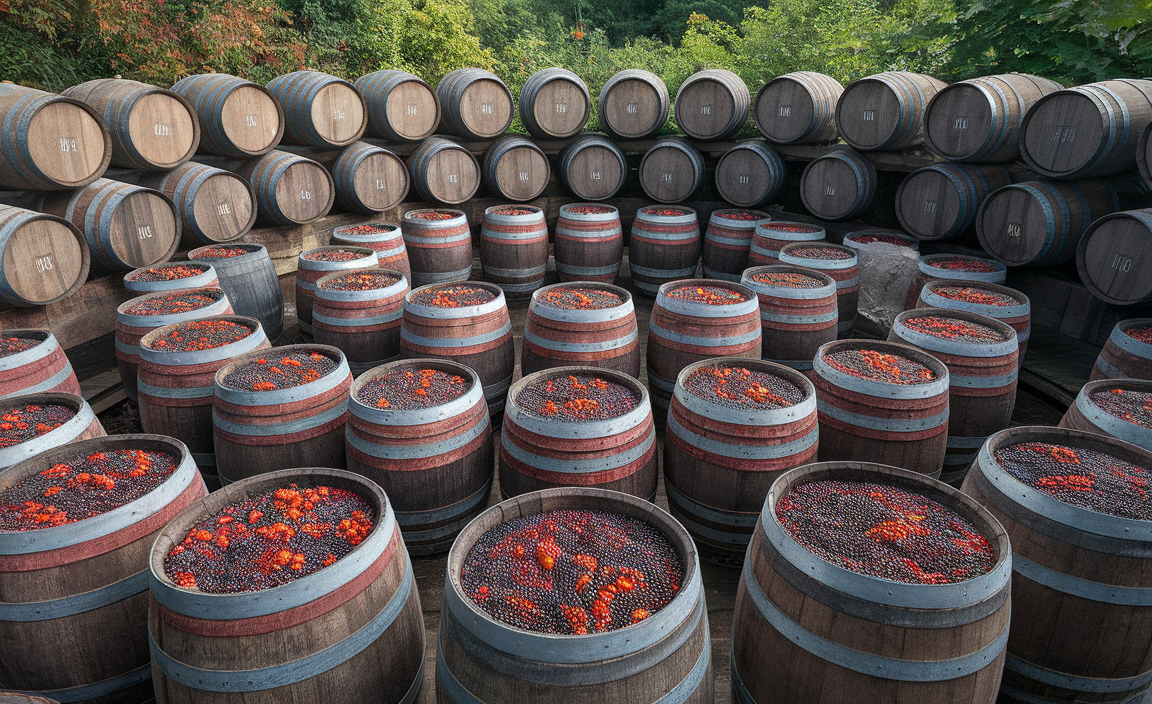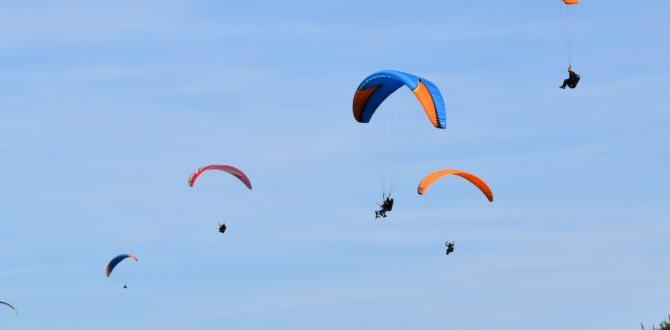Planning your first trip to Antigua Guatemala? This guide offers essential tips for a comfortable, memorable, and stress-free experience. From packing essentials to navigating local culture and transportation, we’ve got you covered. We’ll help you discover the magic of this UNESCO World Heritage city with confidence. Prepare for cobblestone streets, vibrant colors, and breathtaking volcano views!
Antigua Guatemala is a dream destination, but getting there and exploring can feel a bit overwhelming if it’s your first time. Many travelers worry about what to pack, how to get around, and how to make the most of their visit without missing out on the best parts.
This guide is designed just for you! We’ll break down everything you need to know in simple, easy-to-understand steps. You’ll feel prepared and excited to explore Antigua’s rich history and stunning beauty from the moment you land. Let’s get you ready for an unforgettable adventure!
Here’s what we’ll cover to make your Antigua journey smooth sailing:
Getting to Antigua and Getting Around
Packing Essentials for Comfort and Convenience
Must-See Sights and Activities
Cultural Etiquette and Local Insights
Food and Drink Recommendations
Budgeting and Currency
Safety Tips for First-Timers
Getting to Antigua Guatemala and Getting Around
Arriving in Antigua is part of the adventure! The closest international airport is La Aurora International Airport (GUA) in Guatemala City. From there, Antigua is about a 45-minute to 1.5-hour drive, depending on traffic. The most common and convenient ways to reach Antigua are:
Airport Transfers
Shuttles: Pre-booked shared or private shuttles are very popular. They are cost-effective and reliable. Many companies operate from the airport directly to your hotel in Antigua. Look for reputable companies like Adrenalina Tours or GuateGo for booking options.
Taxis/Uber: Taxis are available at the airport, but it’s highly recommended to use official airport taxis or pre-booked services to ensure fair pricing and safety. Uber is also an option from Guatemala City to Antigua, though availability can vary.
Private Drivers: For ultimate convenience, especially if you have a lot of luggage or are traveling with family, a private driver is a great option. This is usually the most expensive, but offers door-to-door service.
Getting Around Antigua
Antigua itself is wonderfully walkable, and that’s the best way to soak in its charm!
Walking: The historic center is compact and filled with charming cobblestone streets. Wear comfortable shoes – those cobblestones are no joke!
Tuk-Tuks: These three-wheeled taxis are abundant and a fun way to get around if your feet need a rest or you’re going a bit further. Negotiate your fare before you hop in. Short trips within the city center usually cost Q10-Q20.
Taxis: Regular taxis are also available for longer distances or if you prefer a more enclosed ride.
Rental Cars: It’s generally not recommended to rent a car for your stay in Antigua, as parking is difficult, and the city is best explored on foot. If you plan extensive travel outside Antigua, consider renting one upon your departure from the city.
Packing Essentials for Comfort and Convenience
Packing smart is key to a stress-free trip. Antigua has a spring-like climate year-round, but evenings can be cool, and there are distinct wet and dry seasons.
Clothing
Layers are key: Pack lightweight t-shirts, long-sleeved shirts, and a sweater or fleece jacket.
Comfortable Walking Shoes: Absolutely essential for those cobblestone streets! Think sturdy sneakers or comfortable travel loafers.
Rain Gear: A lightweight, waterproof jacket or a poncho is a must, especially during the rainy season (May to October). An umbrella is also handy.
Nicer Outfit: For evenings out or dining at more upscale restaurants, bring one slightly dressier outfit.
Socks and Underwear: Pack enough for your trip, plus a few extras. Consider moisture-wicking socks for walking.
Sleepwear: Comfortable pajamas for restful nights.
Personal Care and Health
For peace of mind and comfort, especially if you or a travel companion might need discretion and added security, consider packing personal care items. This is where having reliable solutions can make a huge difference in enjoying your trip without worry.
Adult Diapers/Briefs: If you or someone you’re traveling with requires adult incontinence products, packing a sufficient supply is crucial for comfort and confidence throughout your travels. Brands like Depend, TENA, or NorthShore are known for their absorbency and discretion, suitable for long travel days or when away from easy access to facilities. Having these easily accessible in your day bag or luggage can be a lifesaver.
Child Diapers/Pull-Ups: For parents traveling with young children, packing plenty of diapers or pull-ups is non-negotiable. Options like Pampers Swaddlers or Huggies Little Movers are good choices for active little ones. Having a small stash in your day bag ensures you’re always prepared for those unexpected moments, whether you’re exploring ruins or enjoying a café.
Hand Sanitizer: Essential for on-the-go cleanliness before eating or after touching surfaces.
Sunscreen: The Guatemalan sun can be strong, even on cloudy days. Use SPF 30 or higher.
Insect Repellent: Especially important if you plan visits to areas outside the city center or during dawn/dusk.
Basic First-Aid Kit: Include bandages, antiseptic wipes, pain relievers, and any personal medications.
Other Essentials
Reusable Water Bottle: Stay hydrated and reduce plastic waste. Many hotels and hostels offer filtered water refills.
Power Adapter: Guatemala uses Type A and Type B plugs, the same as in the US and Canada. If you’re coming from elsewhere, a universal adapter is wise.
Portable Power Bank: Keep your phone and other devices charged while you’re out exploring.
Camera: To capture the stunning scenery and vibrant culture.
Daypack: For carrying essentials like water, snacks, camera, and a light jacket.
Copies of Important Documents: Passport, visa (if applicable), flight information, and hotel reservations. Keep digital copies too.
Must-See Sights and Activities
Antigua is brimming with historical sites, charming plazas, and breathtaking views. Here are some absolute must-sees for first-timers:
Iconic Ruins and Landmarks
Santa Catalina Arch (Arco de Santa Catalina): The most iconic symbol of Antigua. It’s a picturesque spot for photos, especially with Volcán de Agua in the background.
Antigua Cathedral: Located on the main square, its impressive facade hints at the grandeur within.
Convento de Santa Clara: Once a thriving convent, its resilient ruins offer a glimpse into colonial life and have become a popular, photogenic spot.
Convento y Museo de San Francisco el Grande: This is one of the oldest buildings in Antigua, with a beautiful church and a museum showcasing religious art. The highlight for many is the tomb of Saint Hermano Pedro.
La Merced Church: Recognizable by its vibrant yellow facade, this Baroque church is a stunning example of colonial architecture and offers great views from its rooftop.
San Jerónimo Monastery: Explore the remnants of this once-grand religious complex and imagine its past glory.
Cultural Experiences
Central Park (Parque Central): The heart of Antigua. It’s surrounded by important buildings like the Cathedral and City Hall. Enjoy people-watching, local vendors, and street performers.
La Azotea Cultural Center: Located just outside the city center, this center offers insights into Guatemalan textiles, coffee production, and has a small museum. It’s a great way to learn about local crafts and agriculture.
ChocoMuseo: A fun and interactive museum dedicated to chocolate. Learn about its history, cultivation, and enjoy tasting sessions. They even have workshops where you can make your own chocolate!
Jade Museum & Workshop: Antigua is known for its jade. Visit a museum to learn about the different types and colors of jade, and then see artisans at work.
Local Markets: Immerse yourself in the local culture at the handicraft market near the Arch or the larger municipal market for a taste of everyday life, fresh produce, and local goods.
Volcanic Views and Day Trips
Volcán de Agua: This majestic volcano towers over Antigua and is visible from almost anywhere in the city. While climbing it is a serious undertaking for experienced hikers, its presence is a constant, stunning backdrop.
Pacaya Volcano Hike: For a moderate adventure, consider a guided tour to hike Pacaya. It’s an active volcano where you can often roast marshmallows in volcanic heat! Tours typically include transportation from Antigua.
Coffee Farm Tours: Guatemala is famous for its coffee. Visit a nearby Finca (farm) to learn about the coffee-making process, from bean to cup, and enjoy delicious samples. Finca Filadelfia is a popular choice.
Indian Nose (La Nariz Indígena): For spectacular sunrise or sunset views over Lake Atitlán, combined with the surrounding volcanoes, a guided hike to Indian Nose is a popular, though sometimes challenging, day trip. This often involves an early start from Antigua.
Cultural Etiquette and Local Insights
Understanding local customs will enhance your experience and show respect. Guatemalans are generally warm and welcoming.
Greetings and Social Interaction
Greetings: A simple “Buenos días” (Good morning), “Buenas tardes” (Good afternoon), or “Buenas noches” (Good evening) goes a long way. A handshake is common when meeting someone.
Politeness: “Por favor” (Please) and “Gracias” (Thank you) are essential.
Patience: Things can move at a slower pace than you might be used to. Embrace the “mañana” culture – it’s about enjoying the moment.
Dress Code
Modesty: While Antigua is tourist-friendly, dressing modestly is appreciated, especially when visiting churches or more traditional areas. Aim to cover shoulders and knees.
Comfort: As mentioned, comfortable shoes are paramount.
Photography
Ask Before Photographing: Always ask for permission before taking close-up photos of people, especially children. Many people are happy to have their photo taken, but a polite inquiry is respectful.
Language
Spanish: The official language is Spanish. While many people in tourist areas speak some English, learning a few basic Spanish phrases will be incredibly helpful and appreciated.
Hola – Hello
Adiós – Goodbye
¿Cuánto cuesta? – How much does it cost?
¿Dónde está…? – Where is…?
Sí – Yes
No – No
Agua – Water
Comida – Food
Tipping
Restaurants: A service charge of 10% is often already included in the bill. If it’s not, a tip of 10% is customary for good service.
Guides and Drivers: It’s customary to tip your tour guides and drivers. The amount depends on the length and quality of service, but a general guideline is Q50-Q100 per person for a full-day tour.
Respecting Sacred Sites
Churches and Convents: Be mindful of the sacred nature of churches and religious ruins. Dress modestly, speak in hushed tones, and avoid disruptive behavior.
Food and Drink Recommendations
Antigua offers a delightful culinary scene, from street food to fine dining.
Must-Try Guatemalan Dishes
Pepian: A rich, flavorful stew often made with chicken or beef, pumpkin seeds, sesame seeds, and a blend of spices. It’s considered one of Guatemala’s national dishes.
Kak’i’k: A hearty turkey soup from the Q’eqchi’ Maya region, known for its unique blend of spices and chili.
Jocón: Another traditional stew, typically made with chicken and a tomatillo-based green sauce flavored with cilantro and peppers.
Tamales: Corn dough steamed in banana leaves or corn husks, with various fillings (chicken, pork, vegetables). Tamales Colorados are savory, often with a red masa and meat, while Tamales Dulces are sweet and often enjoyed as dessert.
Chiles Rellenos: Roasted poblano peppers stuffed with a savory meat filling and often topped with a tomato-based sauce.
Plantains: Sweet fried plantains (plátanos fritos) are a common and delicious side dish or dessert.
Local Drinks
Coffee: Guatemala is a world-renowned coffee producer. Enjoy a cup of locally grown Arabica coffee.
Horchata: A refreshing drink made from rice milk, cinnamon, and vanilla.
Tamarindo: A sweet and tangy drink made from tamarind pulp.
Local Beer: Try Gallo or Victoria, popular Guatemalan lagers.
Where to Eat
Street Food: Don’t shy away from trying local street food, but choose vendors that look clean and are popular with locals. Elote loco (corn on the cob with various toppings) and tostadas are common.
Comedores: Small, family-run restaurants offering affordable set meals (menus del día).
Cafes and Restaurants: Antigua has countless excellent cafes and restaurants offering everything from traditional Guatemalan fare to international cuisine. Some popular spots include:
Caesar’s: Known for its delicious steaks and traditional dishes.
Rincon del Convento: Offers great views and a varied menu.
Mesón Panza Verde: A more upscale option with a focus on organic ingredients and a lovely garden setting.
Union Café: Popular for coffee and light meals.
Food Safety
Water: Do not drink tap water. Always drink bottled, filtered, or purified water. Use bottled water for brushing your teeth.
Fruits and Vegetables: Wash all fruits and vegetables thoroughly with purified water, or peel them yourself.
Budgeting and Currency
Antigua is relatively affordable, but costs can add up depending on your travel style.
Currency
Guatemalan Quetzal (GTQ): The official currency.
US Dollars: Widely accepted in tourist areas, but you’ll often get a better rate exchanging for Quetzales.
Getting Cash
ATMs: Available in Antigua, especially around the main square. Inform your bank of your travel dates to avoid issues. There might be withdrawal limits, and not all ATMs accept foreign cards. Look for ATMs connected to major banks like Banrural, Banco Industrial, or G&T Continental.
Money Exchange: You can exchange USD for GTQ at exchange houses or some banks. Avoid exchanging at the airport if possible, as rates are usually not favorable.
Typical Costs (Estimates)
Here’s a general idea of what to expect:
| Item | Estimated Cost (GTQ) | Notes |
| Budget Hostel Bed | 75 – 150 | Per night |
| Mid-Range Hotel Room | 300 – 800 | Per night |
| Local Meal (Comedor) | 30 – 60 | Per person |
| Restaurant Meal | 80 – 150+ | Per person, mid-range |
| Coffee | 15 – 30 | Local cafe |
| Bottled Water (1L) | 5 – 10 | |
| Tuk-Tuk Ride (Short) | 10 – 20 | Negotiate fare |
| Shuttles (Airport) | 100 – 150 | Per person, one way |
| Pacaya Volcano Tour | 200 – 350 | Excludes tips |
| Local Beer | 15 – 30 | |
Note: Prices are approximate and can vary.
Tipping
Service Charge: A 10% service charge and 12% VAT (IVA) are often added to bills in restaurants and hotels. Check your bill carefully.
Discretionary Tips: For excellent service beyond what’s included, an additional tip of 5-10% is appreciated for servers, hotel staff, and tour guides.
Bargaining
Markets: Bargaining is generally accepted in handicraft markets, but do so respectfully. Start with a reasonable offer and be prepared to meet in the middle.
Fixed Prices: Do not bargain in shops with clearly marked prices or in restaurants.
Safety Tips for First-Timers
Antigua is generally safe for tourists, but like anywhere, it’s wise to be aware of your surroundings and take basic precautions.
General Safety
Be Aware of Your Surroundings: Especially in crowded areas or at night.
Valuables: Keep your valuables secure and out of sight. Consider using a money belt or a secure internal pocket for your passport, cash, and credit cards.
Pickpocketing: Be vigilant in busy tourist spots and markets.
Night Safety: Stick to well-lit, populated streets after dark. If you need a taxi, use reputable services or your hotel’s recommendation.
Altitude Sickness: Antigua sits at about 1,500 meters (5,000 feet). While not usually severe, some people experience mild symptoms. Stay hydrated and avoid excessive alcohol on your first day.
Street Smarts: Avoid walking alone late at night in unfamiliar areas.

